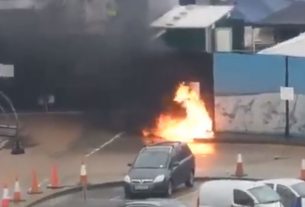The ongoing conflict in Gaza has led to severe humanitarian consequences, as Israel’s military operations continue to push Palestinians into an increasingly restricted and dangerous area. The Israeli Defense Forces (IDF) have expanded their ground operations, deepening their control over Gaza and creating a significant buffer zone along the Israeli border. This has caused widespread displacement, forcing hundreds of thousands of civilians into a diminishing space along Gaza’s Mediterranean coastline.
Since mid-March 2024, the Israeli military has issued numerous evacuation orders, affecting large parts of Gaza, including the city of Rafah in the south. The United Nations reports that roughly 400,000 people have been ordered to move, as the Israeli forces intensify their mission to dismantle Hamas’ military capabilities and secure the release of Israeli hostages. As a result, vast areas of Gaza have become either uninhabitable or off-limits.
Gaza City, the region’s largest urban center, has been overwhelmed with displaced individuals seeking refuge. Many neighborhoods, including Sheikh Radwan, have seen an influx of families living in temporary shelters, such as tents, amid the rubble of bombed buildings. Local residents, like Raed Radwan, describe the dire conditions, with streets littered with debris and makeshift shelters taking over public spaces.
Additionally, the city faces health and sanitation challenges, with Hatem Abdulsalam noting the growing problem of garbage and the presence of pests due to the lack of waste management systems. Overcrowded shelters are further strained, and essential services are severely limited. The UN’s humanitarian agency, OCHA, states that two-thirds of Gaza is either under evacuation orders or designated as “no-go” zones, complicating the distribution of aid.
The Israeli strategy, led by Defense Minister Israel Katz, aims to pressure Hamas by making life increasingly unbearable for Gaza’s residents, hoping to force them into leaving. Katz has spoken of plans to divide Gaza further, potentially isolating regions like the Morag Corridor, once home to a now-dismantled Israeli settlement. Despite the heavy military presence, Hamas remains a formidable opponent, and Israel’s operations have not significantly diminished the group’s resistance.
This military approach also aligns with statements from Israeli officials who suggest that the ultimate goal is to encourage the voluntary relocation of Gaza’s residents. Prime Minister Benjamin Netanyahu has discussed plans to facilitate the movement of Palestinians to neighboring countries, echoing proposals put forward during Donald Trump’s presidency, though these plans have faced significant international skepticism.
The situation has worsened in recent weeks, with Gaza’s residents facing severe shortages of food, water, and medicine. The blockade imposed by Israel has led to a near-complete halt in aid shipments, and hospitals report a lack of essential drugs, including cancer medications. As the region struggles to meet basic needs, violence continues, and the civilian toll rises. According to the UN, Israeli airstrikes have targeted residential buildings, resulting in numerous casualties, particularly among women and children.
Civilians in Gaza, like Faisal Jamal, describe the uncertainty and despair of having to abandon their homes and belongings, not knowing where to go next. For those like Abu Mohammad, a 71-year-old man with chronic health issues, displacement has become an unending cycle. These harsh realities highlight the ongoing suffering of Gaza’s population amidst a conflict that shows no signs of abating.




